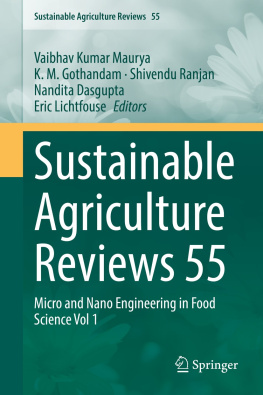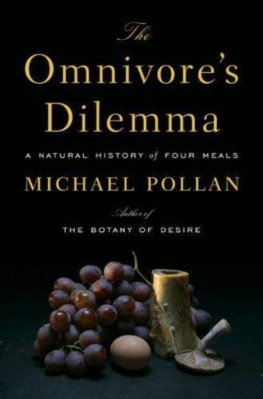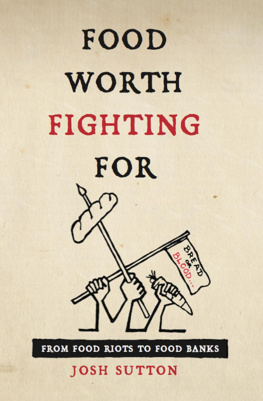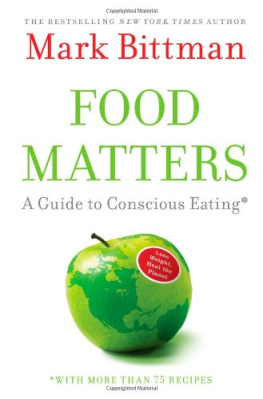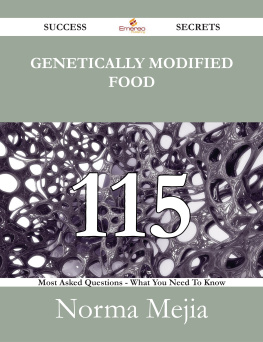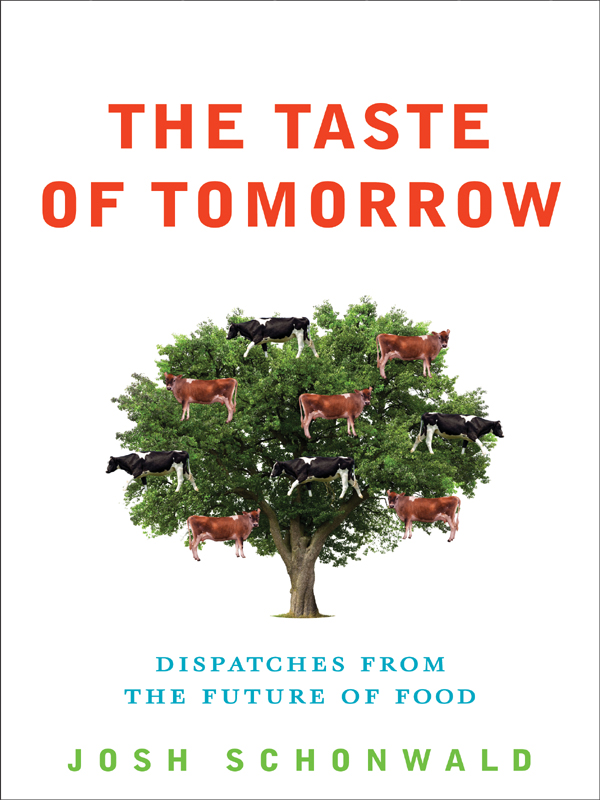GASTROPUB 2035
IMAGINE THAT YOU ARE EXTREMELY HUNGRY. You want a burger and a beer, and you will be sating your appetite in Colorado Springs, Colorado. Also, please consider that the date of this beer and burger quest is not now, or next year, but July 25, 2035.
You choose to go to Mobys, a pub on Tejon Street.
You sit down in a booth. You check out the menu on your 10G iPhone.
Mobys has a Real Beef Burger special tonighta quarter pound of grass-fed, free-range, antibiotic-free Hereford; char-grilled, topped with coarsely ground Balinese long pepper, slathered with white cheddar and homemade papaya ketchup, with a side of cassava fries and choice of soup or salad. Sounds fine. Its sixty dollarsits by far the most expensive thing on the menu.
The waitress, detecting your price point discomfort, notes that its real meat. She suggests another burgerthats almost as goodand is only ten dollars. We have cow meat, bison, chicken, and porkall fresh out of the bioreactor. We have an excellent meat-grower.
You tip an eyebrow.
If you want something more traditional , she responds, you should try the blackened rabbit.
Then she waves toward the kitchen, and smiles. We have our own rabbitry.
Were not in some foodie-hipster hotspot; were in a regular-guyish brew pub, a bulwark of comfort food, in the Air Force Academys hometown. Still you, the time travelera well-read, adventurous, food-inquisitive time travelerneed a translator to decode the appetizers.
The salad of the day: A bed of Afghan greens, topped with elderflowers, cloudberries, puntarelle, and a Sinaloan sea vegetable. The soup: a simple yet classic Egusi. The appetizer special: Zanzibari pizza.
You order the soupits unbearably spicy. Inedible. You gasp. You then ask for this Zanzibari pizzait tastes nothing like pizza. It has Indian spices, and thin slices of rabbit meat, in a bed of naan. Its amazingly good.
Mobys, like any restaurant in 2035 (and many in 2012), provides copious information on all of its foodingredients, health issues, production methods, chemicals used and not used, place of origin. All the Mobys servers wear big buttons that say, Try me! Ask about your food source! Amused, you start quizzing your twenty-something server. The salad: Its the chefs favoritea mix of crucifers and blue lettuces native to an area in Afghanistans Swat Valley. The sixty-dollar beef burger? Seventeen percent fat, 612 calories, slaughtered two days ago at the Gunnison Ranch, sixty-five miles away.
The house-grown meat? Heart-friendly! Its loaded with omega-3s and enhanced with an extra dose of albumin.
The servers knowledge is not terribly alienyouve heard know-it-all waitstaffbut what piques your interest is when you start grilling her about the unusually long Catch of the Day list.
Colorado Springs is landlocked; its more than 1,000 miles from the nearest salt water, the Gulf of Mexico. The state isnt exactly teeming with freshwater lakes. Yet several fish are listed as todays catch. Puzzlingly, the place of origin for all of Mobys seafoodAfrican pompano, Atlantic salmon, Dublin Bay prawns, Arctic char, Chilean sea bassis Colorado Springs, Colorado.
The server chuckles when you ask, skeptically, how its possible that African pompano, a saltwater fish, can be from Colorado Springs. She points across the street to a steel-and-glass tower that looks like a corporate headquarters. Thats Deep Sea Farmsthe largest aqua-farm in Springs.
The strangest aspect of your Mobys meal has nothing to do with Mobys, its food, or its food vendors. Its the other patrons. The high-volume fellow to your right, evidently a Las Vegasbased water broker and rabid believer in the virtues of quercetin, boasts about how he bred some blue bananas for his mom. The mans companion is underwhelmed. Anyone can do that, she says.
And the couple sitting next to youa pair of nonagenarians, judging from their conversationeat two burgers (real and house-grown), a rabbit quesadilla, fried emu nuggets, and then put away what looks like a chocolate cake with two scoops of ice cream. The elderly man drinks at least three coffee stouts, and several single-malt scotches. When he orders a shot of tequila, he turns to you with bloodshot eyes. A toastto honor the downfall of the last Islamic theocracy.
At the end of the gluttonous display, the ninety-something pulls out a pillbox from his breast pocket and produces a thin wafer. He puts it on his tongue, smiles at his companion, and looks at his watch. Ill be perfectly sober in ten minutes. Thank God for nano-encapsulation.
The Next Salmon and the Bagged Salad Moment
BEFORE I LONGED FOR A CHICKEN NUGGET made from a stem cell, or a cherry tomato spiked with lemon basil genes, before I dreamed of the blue-green lettuce of Afghanistan or the spicy soups of northern Nigeria, before I tried emu burgers, ostrich hot dogs, beefalo steaks, or algae-sugar cookies, before I knew the Trickle-Down Theory of Food Innovation, or the location of the Last Culinary Frontier, before I cared about the optimal breeding temperatures for marine finfish, or the technology needed to achieve the food pill, before I gave any thought to what food circa 2035 might look or taste or smell like, there was a chicken dinner.
What was significant about this meal in Miami, Florida, in December 2005, was not the actual quality of the chickenneither unusually good nor badbut rather the conversation that surrounded it. Toward the end of the meal, somewhere between a final nibble on a dry thigh and a stab at the soggy green beans, one of my dining companions, a short, brown-haired naval reservist named Ivy Kupec who served as a PR person for the University of Miami, uttered the following four words: Theres this new fish.
The simple combination of words intrigued me. A new fish? Could there be such a thing?
As it turned out, this new fish was not new in the Darwinian sense, nor was it the ivory-billed woodpecker of fishrecently discovered in, say, an isolated reef off the coast of Papua New Guinea. It was not even endangeredit was even better than that. It tastes like a cross between Chilean sea bass and swordfish, said Kupec. Swordfish was one of my personal favorites. Its really, really good as a steak. You can even grill it. Like a burger. The name of this new fish was cobia, and the strangest thing about all this talk was the fact that the new fish had a maker. Dr. Benetti, said Kupec. He thinks cobia is going to be really big someday, like salmon.
IT WASNT EASY to make an appointment with Dr. Daniel Benetti. During the time that I pursued Benetti, I received messages that he was in Brazil one week, Washington, D.C., the next, then at a conference in Hawaii. A month later, I heard he was on his way to Saudi Arabia.
This globe-trotting is, I later learned, not unusual for Benettis ilk: aquaculturists, or more commonly, fish farmers. Benetti is among a subgroup of fish farmersmarine finfish specialists, or mariculturistswho are perhaps even more prone to globe-trotting. In fact, one of Benettis consiglieri made it sound as if a marine fish farmers life is something like that of a surfer. Hawaii, Australia, the Mediterranean. The travel is rough, he said wearily, also noting that most aquaculture researchers had been divorced.
After reading about Benetti and talking with a few of his peers, I still didnt know what to expect. Perhaps he was a sun-scarred old marinerhe had, after all, pursued fish for the past twenty-five years, had traveled from the southernmost seas of the Atlantic to the northern extremes of the Pacific. Perhaps he was some lab-rat scientist who mates fish like an aquatic Frankenstein. When I finally did meet Benetti in personbetween his trips to Brazil and Hawaiihe looked like a Spanish soap opera star and sounded like one, with his thick Latin accent. Hes tall, handsome, silver-haired, fiftyish. He wears polo shirts and drives an Audi, and seemed more like the type of guy youd meet at a South Florida tennis club than in a lab.




